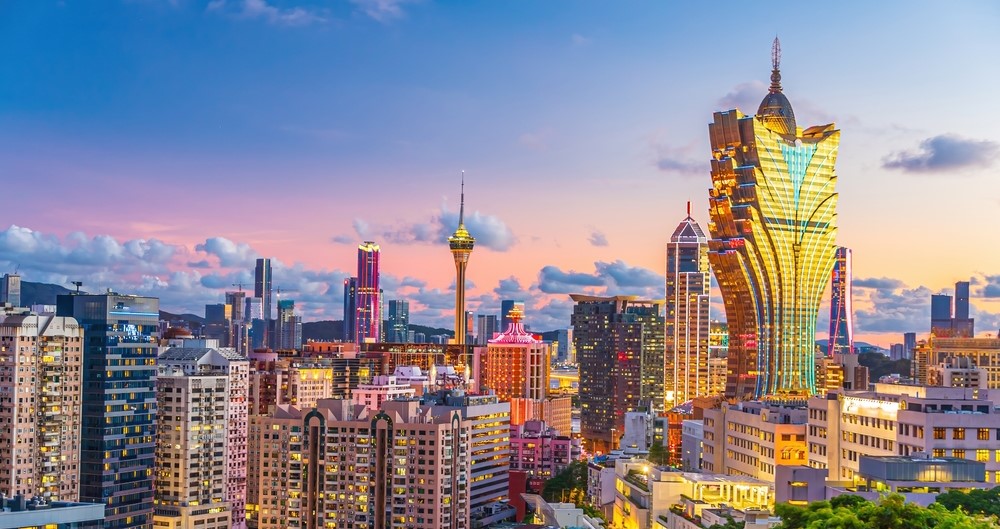
Yujin Katsube, July 16th, 2024

Although Macau is renowned for having the world’s highest GGR, it has faced twists and turns reaching this position. Significant growth since the beginning of the 21st century, surpassing Las Vegas in 2007 to become the world’s highest, led to a peak in 2013. Without exceeding that level again, ups and downs were experienced… and then COVID-19 arrived!
Macau’s Zero-COVID policy was maintained for a long time, and strict border controls led to a significant drop in inbound tourists, leading to three years of low GGR. And in 2022, Las Vegas regained its top spot for the first time in 16 years.
However, with the transition to a With-COVID policy in January, 2023 and the advent of the post-COVID era, a full-fledged recovery began, and Macau reclaimed its No.1 spot. This trend of GGR recovery has continued in 2024.
Attention in Macau is now focused on whether GGR can return to pre-COVID levels. According to data released by the Gaming Inspection & Coordination Bureau (DICJ), GGR for the first half of this year reached MOP113.753bn (US$13.65036bn), a 41.9% increase from the same period last year and a recovery rate of 76.1% compared to the same period in pre-COVID 2019.
Given this recovery, the Macau government has raised its GGR target for the 2024 fiscal budget from MOP130bn (US$15.6 bn) last year to MOP216bn (US$25.92bn), or MOP18bn (US$2.16bn) per month. So far, June was the only month not to meet the target, and the first half of the year has been progressing above the target.
However, the GGR target for 2024 remains at 73.9% of the 2019 actual figure of MOP292.455bn (US$35.0946bn). Given performance so far this year, the target seems achievable, but a recovery to pre-COVID levels will be delayed until next year or later.
The GGR target established by the Macau government for this year is well-founded, and meeting this target will achieve a balanced fiscal budget. Most of the Macau’s revenue comes from what is called Casino Tax and this calculation is based on GGR, with a tax rate of about 40%.
In the three years of the COVID-19 pandemic, and the first year of the post-COVID era, we saw fiscal deficit in Macau, and financial reserves were used to manage them.
The Macau government has accumulated significant reserves from ample Casino Tax revenues, providing benefits to residents through cash distributions and improved social welfare. Achieving a GGR that maintains a balanced budget would be seen as a positive result by the Macau government.
But there are concerns about whether Macau’s GGR will be able to recover to pre-COVID levels. On January 1st 2023, a new Casino Management Concession was launched and with this, the so-called Casino Law was revised. New regulations were introduced, including a ‘Cap’ system limiting the number of gaming tables and machines. The total number of gaming tables that the six concession operators can each manage is set to 6,000 units, and the total number of gambling machines is limited to 12,000.
Historically, Macau had no clear regulations on the upper limits for tables and machines. Concession operators applied to the DICJ for new allocations at times such as the opening of new facilities, and these were approved accordingly. In the early stages of the previous concession, the opening of new facilities resulted in a sharp increase in the number of approved gaming tables. But after 2013, when Macau’s revenue reached its peak, the government shifted to restricting new approvals.
The clear goal was to keep the annual average growth rate of casino tables at 3% or less for the 10 years up to 2022. In addition, a new principle included the scale of investment in non-gaming elements as a criterion for approval.
In the past, there was a myth that more tables would result in higher sales resulting in fierce competition among operators for allocations. However, since 2013, even though the number of tables has slightly increased, revenue has not exceeded its peak, and the myth has collapsed.
Given such background, the government explained that the introduction of new ‘caps’ on the number of tables and minimum revenue is aimed at prompting concession operators to use their allocated tables and machines more efficiently.
According to DJCJ data, there were 6,739 active tables and 17,009 gaming machines at the end of 2019. The newly-set upper limits, however, are almost the same as those at the end of the first half of 2022, when GGR had dropped the most due to the COVID-19. When comparing the current upper limits to those at the end of 2019, the number of tables decreased by about 11% and the number of gaming machines by about 29%.
Judging by the flow from the restriction of new allocations since 2013 to the introduction of the Cap system in 2023, it is apparent that the Macau government is not focused on increasing GGR. With the fiscal balance almost stable, it is time to move from the casino-focused measures and shift to being a destination focused on quality and wellbeing.
In the future, even if Macau’s GGR reaches a ceiling, we should not judge success or failure based only on the figures. It is important to consider how the system has changed.
In the revised Casino Law, the Chief Executive set table and machine limits, and current figures were established by the order issued on August 26th 2022. The government won’t allocate new land to the six concession operators but plan the expansion and renovation of existing facilities.
Along with the upper limit on the number of units, a minimum revenue per unit is established by the Chief Executive. If revenue falls short, operators pay the difference with a specified calculation method, limiting the number of units they can secure.
The Live Multi-Gaming (LMG) system has become widespread in Macau to manage limited tables since table number restrictions were introduced.
In fact, there are positive new elements in the Macau casino market. GGR and trends in inbound visitors are somewhat correlated. Visitor numbers have increased and sustained momentum in the post-COVID era. The latest data shows a 50.2% rise in inbound tourists to 14.16m from January to June. Recovery rate was at 82.4% in 2019, showing stronger recovery than GGR. Interestingly, the recovery rate of visitors from mainland China is 76.5%, almost matching the recovery rate of GGR. Tourist trends from mainland China are closely tied to GGR.
Tourists from mainland China need permission equivalent to a visa to travel to Macau. Since the beginning of the year, 10 additional cities have been included in the Individual Visit Scheme (IVS) for Hong Kong and Macau, increasing the total number of the target cities to 59.
Such an addition was made for the first time in 17 years. This could boost annual inbound tourists by 300,000, raising economic expectations in tourism and casinos, with movement between mainland China and Macau expected to keep rising.
Given this situation, Macau’s GGR may return to 2019 levels next year but won’t surpass the 2013 peak, staying around MOP300bn (US$36bn).
Yujin Katsube is the founder and the Editor-in-Chief of Macau Shimbun, the only Japanese-language news media based in Macau. He is also a Macau resident and former Chief Editor of the Japanese and simplified Chinese tourism magazine, Macau PIA (2007-2012), and aims to become the bridge between Macau and the world to promote economic, tourism and cultural exchanges.

